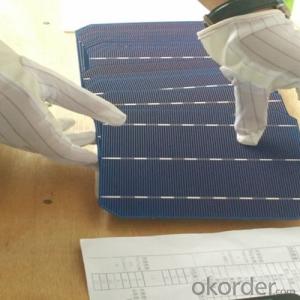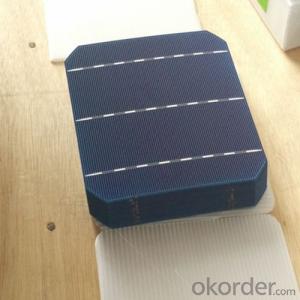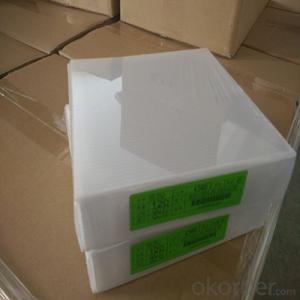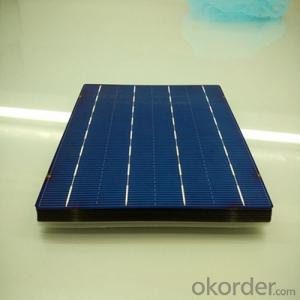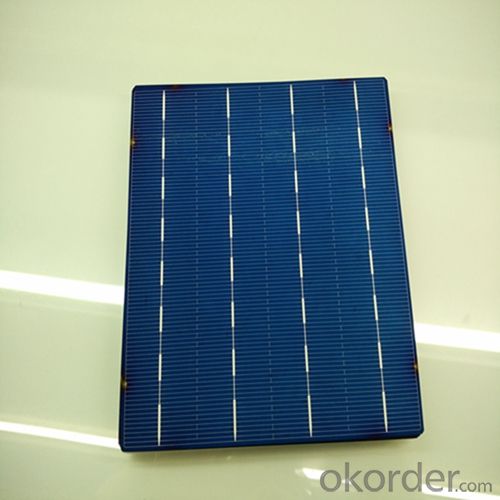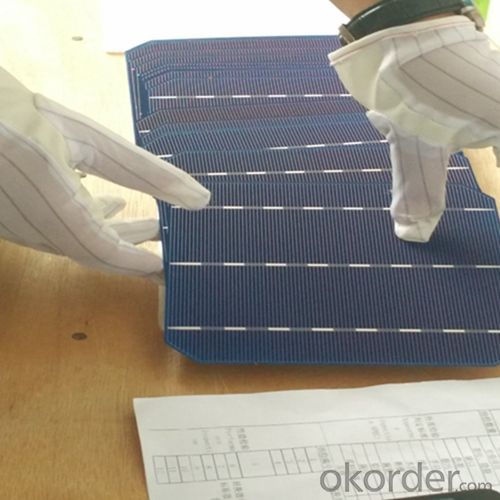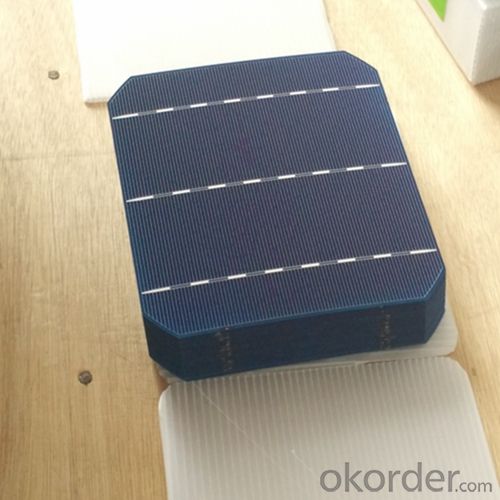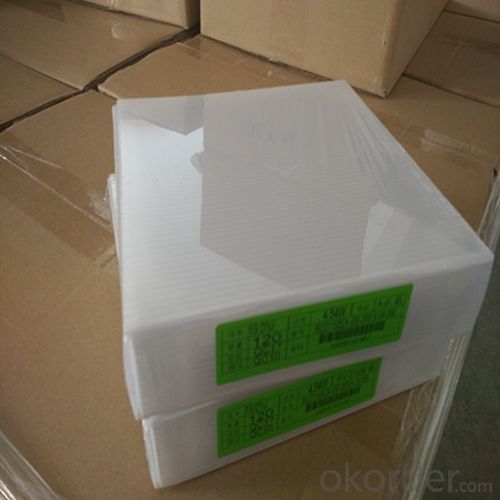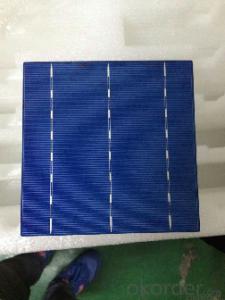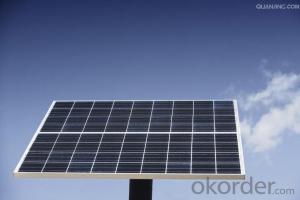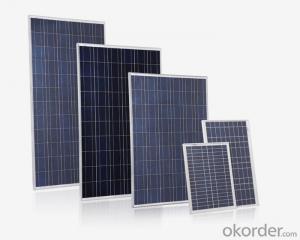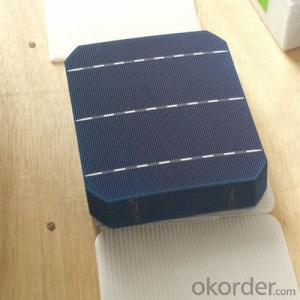Bulk Heterojunction Organic Solar Cells - Poly 156x156mm2 Solar Cells Made in Class BB
- Loading Port:
- Shanghai
- Payment Terms:
- TT OR LC
- Min Order Qty:
- 6500 watt
- Supply Capability:
- 6000000 watt/month
OKorder Service Pledge
OKorder Financial Service
You Might Also Like
The operation of a photovoltaic (PV) cell requires 3 basic attributes:
The absorption of light, generating either electron-hole pairs or excitons.
The separation of charge carriers of opposite types.
The separate extraction of those carriers to an external circuit.
In contrast, a solar thermal collector supplies heat by absorbing sunlight, for the purpose of either direct heating or indirect electrical power generation from heat. A "photoelectrolytic cell" (photoelectrochemical cell), on the other hand, refers either to a type of photovoltaic cell (like that developed by Edmond Becquerel and modern dye-sensitized solar cells), or to a device that splits water directly into hydrogen and oxygen using only solar illumination.Characteristic of Mono 156X156MM2 Solar Cells
You are gaining energy independence - add battery backup power for even greater energy security
The cost of electricity is only going to rise – insure against that rising cost
Adaptive cells change their absorption/reflection characteristics depending to respond to environmental conditions. An adaptive material responds to the intensity and angle of incident light. At the part of the cell where the light is most intense, the cell surface changes from reflective to adaptive, allowing the light to penetrate the cell. The other parts of the cell remain reflective increasing the retention of the absorbed light within the cell.[67]
In 2014 a system that combined an adaptive surface with a glass substrate that redirect the absorbed to a light absorber on the edges of the sheet. The system also included an array of fixed lenses/mirrors to concentrate light onto the adaptive surface. As the day continues, the concentrated light moves along the surface of the cell. That surface switches from reflective to adaptive when the light is most concentrated and back to reflective after the light moves along
Mechanical data and design
Format | 156mm x 156mm±0.5mm |
Thickness | 210μm±40μm |
Front(-) | 1.5mm bus bar (silver),blue anti-reflection coating (silicon nitride) |
Back (+) | 2.5mm wide soldering pads (sliver) back surface field (aluminium) |
Temperature Coefficient of Cells
Voc. Temp.coef.%/K | -0.35% |
Isc. Temp.coef .%/K | +0.024%/K |
Pm.Temp.coef. %/K | -0.47%/K |
Electrical Characteristic
Effiency(%) | Pmpp(W) | Umpp(V) | Impp(A) | Uoc(V) | Isc(A) | FF(%) |
18.35 | 4.384 | 0.526 | 8.333 | 0.63 | 8.877 | 78.39% |
18.20 | 4.349 | 0.526 | 8.263 | 0.63 | 8.789 | 78.54% |
18.05 | 4.313 | 0.525 | 8.216 | 0.63 | 8.741 | 78.32% |
17.90 | 4.277 | 0.524 | 8.161 | 0.625 | 8.713 | 78.04% |
17.75 | 4.241 | 0.523 | 8.116 | 0.625 | 8.678 | 77.70% |
17.60 | 4.206 | 0.521 | 8.073 | 0.625 | 8.657 | 77.36% |
17.45 | 4.170 | 0.519 | 8.039 | 0.625 | 8.633 | 76.92% |
17.30 | 4.134 | 0.517 | 8.004 | 0.625 | 8.622 | 76.59% |
17.15 | 4.096 | 0.516 | 7.938 | 0.625 | 8.537 | 76.80% |
17.00 | 4.062 | 0.512 | 7.933 | 0.625 | 8.531 | 76.18% |
16.75 | 4.002 | 0.511 | 7.828 | 0.625 | 8.499 | 75.34% |
16.50 | 3.940 | 0.510 | 7.731 | 0.625 | 8.484 | 74.36% |
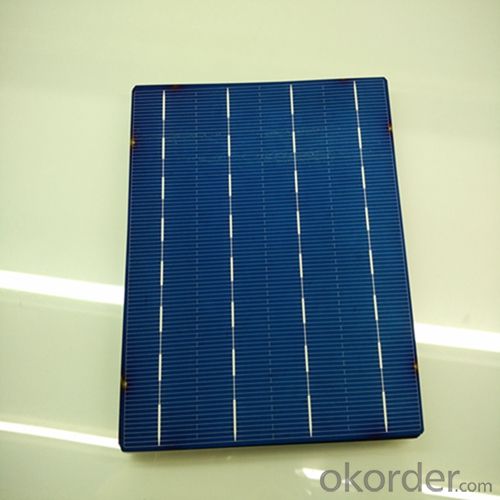
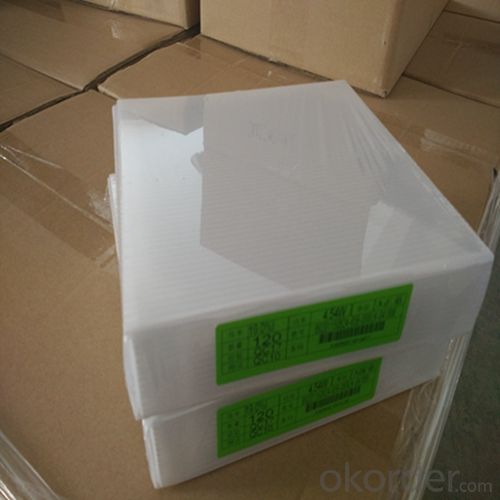
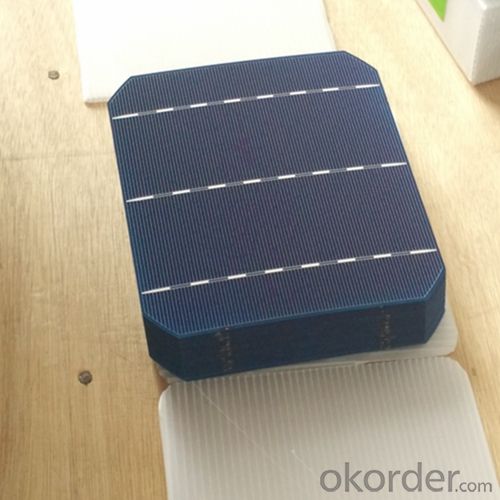
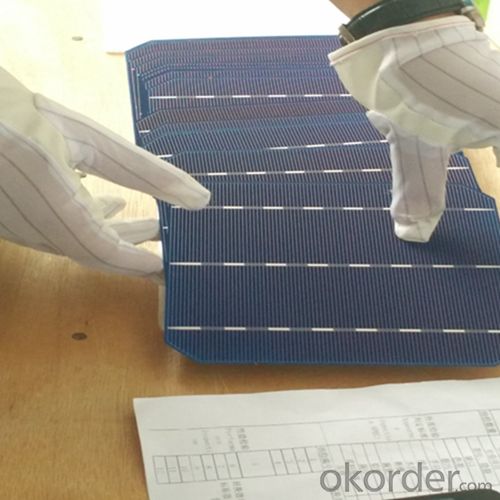
 FAQ
FAQ
Q: What price for each watt?
A: It depends on the quantity, delivery date and payment terms, generally Large Quantity and Low Price
Q: What is your size for each module? Can you tell me the Parameter of your module?
A: We have different series of panels in different output, both c-Si and a-Si. Please take the specification sheet for your reference.
Q: What is your size for each module? Can you tell me the Parameter of your module?
A: We have different series of panels in different output, both c-Si and a-Si. Please take the specification sheet for your reference.
- Q: How do solar cells handle voltage fluctuations in the grid?
- Solar cells do not directly handle voltage fluctuations in the grid. However, they can contribute to stabilizing the grid by generating electricity from sunlight, which helps balance the supply-demand equation. To manage voltage fluctuations, grid operators use various methods such as energy storage systems, inverters, and smart grid technologies that can regulate and control the flow of electricity in the grid.
- Q: Can solar cells be used for military applications?
- Yes, solar cells can be used for military applications. They can provide a reliable and independent source of power for various military equipment, including remote surveillance systems, communication devices, and even powering military bases or remote outposts. Solar cells offer the advantage of being lightweight, portable, and environmentally friendly, making them suitable for a range of military operations and reducing reliance on traditional fuel sources.
- Q: Can solar cells be used in sports stadiums?
- Yes, solar cells can be used in sports stadiums. They can be installed on the roofs or in parking lots to generate renewable energy and offset the electricity consumption of the stadium. This not only helps reduce the carbon footprint but also provides a sustainable and cost-effective energy solution for powering the stadium.
- Q: Are there any books in the market t about solar cells and their applications?
- The solar was used in the SwissTech Convention Center.
- Q: Can solar cells be used in off-grid systems?
- Yes, solar cells can definitely be used in off-grid systems. In fact, they are one of the most common and efficient sources of renewable energy for off-grid applications. Solar cells, also known as photovoltaic cells, generate electricity from sunlight and can be used to power various devices and systems in remote areas where there is no access to the electric grid. They are reliable, environmentally friendly, and can provide a sustainable energy solution for off-grid living or remote locations.
- Q: Can solar cells be used for powering remote mining operations?
- Yes, solar cells can be used for powering remote mining operations. Solar power is a viable and sustainable energy source that can be harnessed in remote areas where access to traditional electricity grids is limited or non-existent. Installing solar panels at mining sites can provide a reliable and cost-effective source of power for various operations such as machinery, lighting, and communication systems. Additionally, solar power reduces dependence on fossil fuels, minimizing environmental impact and promoting clean energy solutions.
- Q: The working principle of solar cells includes the three processes
- The solar cells absorb photons with a certain energy and excite unbalanced carriers (photogenerated carriers) - electron - hole pairs. These electrons and holes should have sufficient life, and they will not disappear after they are separated.
- Q: How do solar cells handle voltage fluctuations?
- Solar cells do not handle voltage fluctuations directly. However, to manage voltage fluctuations, additional components such as voltage regulators or inverters are used in conjunction with solar cells. These components help stabilize and regulate the voltage output from solar cells to ensure consistent and reliable power supply.
- Q: What is the maximum efficiency of a solar cell?
- The maximum efficiency of a solar cell refers to the highest percentage of sunlight that can be converted into electricity, which is currently around 46%.
- Q: How do solar cells handle lightning strikes or electrical surges?
- Solar cells do not have built-in protection against lightning strikes or electrical surges. However, they are usually connected to a surge protection device or a lightning arrestor to divert the excessive current away from the solar panel system. This helps to minimize the risk of damage to the solar cells and associated equipment.
Send your message to us
Bulk Heterojunction Organic Solar Cells - Poly 156x156mm2 Solar Cells Made in Class BB
- Loading Port:
- Shanghai
- Payment Terms:
- TT OR LC
- Min Order Qty:
- 6500 watt
- Supply Capability:
- 6000000 watt/month
OKorder Service Pledge
OKorder Financial Service
Similar products
Hot products
Hot Searches
Related keywords

